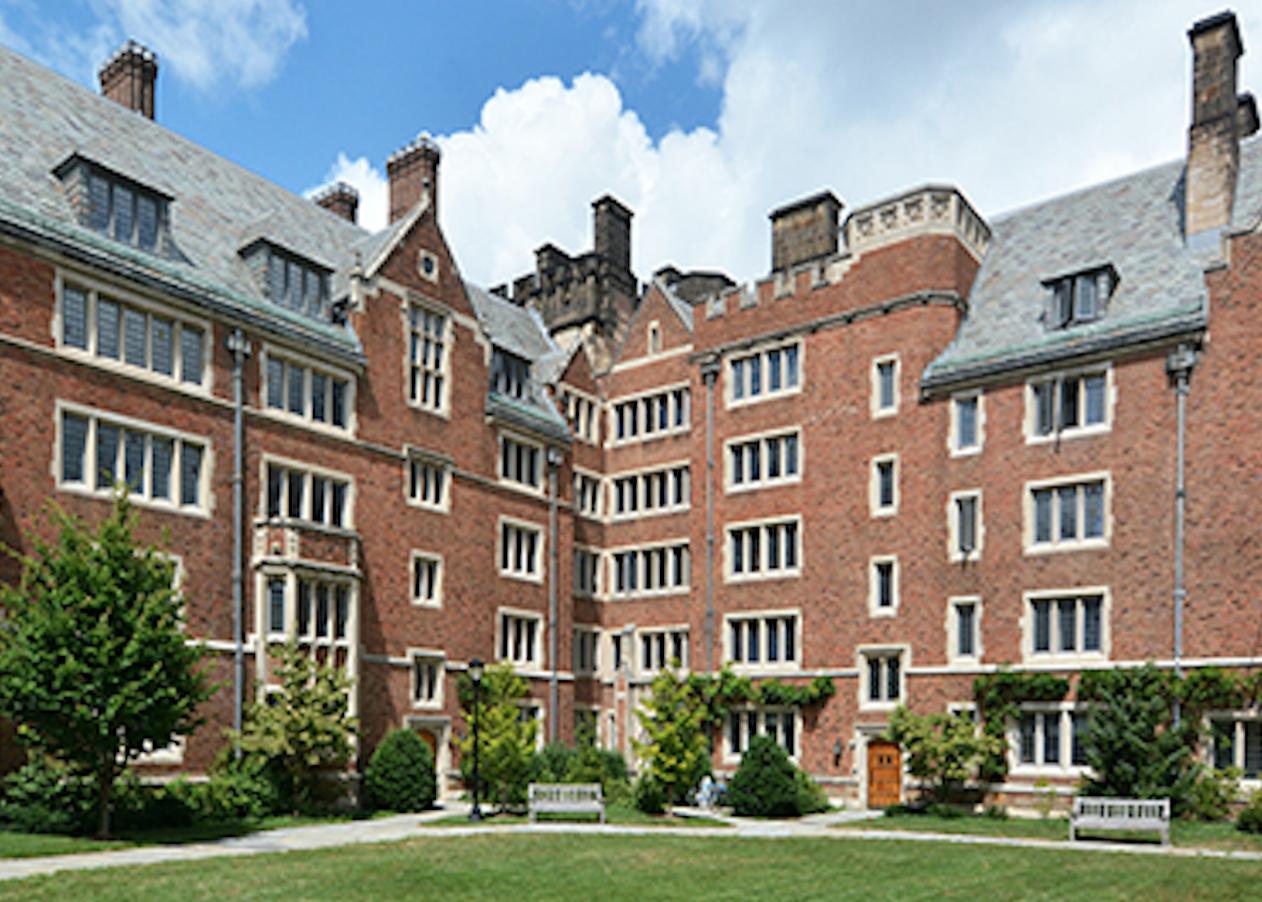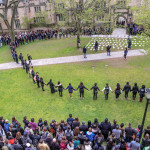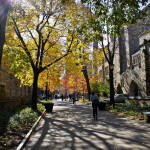by Sohum Pal
It may be that we are trapped in some self-parody of university bureaucracy. That seemed the case to me when I opened President Salovey’s email this past Friday, which stated that after reviewing the Report of the Committee to Establish Principles on Renaming, Salovey had appointed yet another committee to reexamine the “case” of FKA Calhoun College.
The Committee that Salovey has established to apply the findings of the Committee to Establish Principles on Renaming to FKA Calhoun College is a curious one, but most mysterious is one of its members, G. Leonard Baker ‘64. As I read the email on Friday, I recognized two members of the three-person committee as faculty. I did not recognize Baker, except as a graduate of FKA Calhoun College. A Google search, however, revealed that Baker is a member of Yale’s Investment committee, with no formal background in scholarship or ostensible interest in the well-being of today’s Yale students.
Should this raise questions? Yes, but those questions are self-evident ones regarding the ways in which Yale values its commitment to global capitalism and cordial alumni relations over its duty to create a home for its students (and a discursive space that does not violate their humanity). Even more interesting is the university’s insistence on excluding the voices of current undergraduates from questions of Yale College’s direction.
As an incoming freshman, it was a matter of some surprise to me that the Committee to Establish Principles on Renaming included only one undergraduate student. It should, perhaps, have served as an augury of the composition of this new Committee. Undergraduates are the only ones who have either the appropriate background to represent the students of Yale College or a compelling interest invested in the name of FKA Calhoun College. These voices are almost always excluded. If they are not excluded, they are inevitably drowned out by the voices of Yale Corporation members, alumni, and administrators.
I am familiar with the function of the bureaucratic committee report. Having sat on a Yale College Council Task Force this semester and on numerous other similarly administrative committees in the past, I know that the Committee did not expect anyone to read the report in full, with the exception of a few administrators. For one thing, the report provides copious background and narrative, with little delineation of its final conclusions and recommendations. I know, too, that this report will be used to bury inflammatory issues–like the name of FKA Calhoun College–in the course of time and generational shift. As members of the Yale community graduate and move on, they will take the anti-racism protests of last year with them. Concern over FKA Calhoun College will ebb, becoming less of an issue for campus-wide attention.
But is that right? The answer is a resounding no: the name of FKA Calhoun College is an affront to every Native and Black student who walks these halls. We cannot allow it to become a non-issue–just as we cannot become self-satisfied if the name is changed: it is probable that even in the event of FKA Calhoun’s name change, racism will still flourish at Yale, as it has for hundreds years of prior. It is a fact that generational memory and exhaustion engendered by emotional labor changes political tides. Knowing how student memory works, the Yale administration has engineered a bureaucratic structure whose aim is ostensibly to deal with the name of FKA Calhoun College, but whose intent may just as easily be to defer the case until it is no longer relevant to the students then attending Yale.
Like so many things in the ivory tower of academia (especially at Yale, where the love of theory has no peer), the question of FKA Calhoun College was made into an intellectual issue over the symbolism of names and naming. It became a question of history, of “the way a community memorializes its past [as] a way to recognize important alterations in the community’s values,” while “not eras[ing] the historical record” (3). The argument goes that changing the name of the college would be an act of erasure and willful forgetting of the tragedies and cruelties that shaped and continue to shape the lives of people of color today, namely slavery and forced relocation of Native peoples and their related institutions.
This line of argument surprises me, for people of color, especially Black and Native students, need no reminding of the cruelties that have formed this nation. They live in the legacy of it, in the form of systematic racism and inequities. It seems to me, too, to be a critical failure of Yale’s purported pedagogical mission–a mission that the Committee drew heavily from in establishing its principles–if the cruel history of this nation can ever be forgotten. Students come to Yale to learn–if they can leave Yale without understanding the horror that Calhoun advocated for, that is a failing of the university and its faculty. It is not a problem that can be remedied by leaving Calhoun’s name on Elm Street. Who, then, does the name remind? More importantly, is the question one of reminding, or is it one of how to convey to non-Black and non-Native students the precise import of Calhoun’s legacy in the United States’ history of racial injustice?
There is a danger in removing Calhoun’s name, though, and it is one that Peter Salovey recognized in his late April statement (cited in the report): changing Calhoun’s name could lead to “downplaying the lasting effects of slavery” and “allow us to feel complacent, or, even self-congratulatory” over somehow vanquishing the colonial legacy and the racism it engendered. Yet the Committee failed to acknowledge this legitimate danger, instead focusing on the false and constructed threat of forgetting or “rewriting” history.
The Committee, too, was somewhat dismissive and condescending in its brief reference to people of color who protested Yale’s institutionalized racism last Fall, citing that “some students said that the Calhoun name was emblematic of a more general phenomenon of racial oppression and injustice at Yale. Such students stated that they see a pervasive white supremacy around campus in everything from the portraits on the walls, to the racial composition of the faculty, to the courses offered in classrooms.”
The Committee focuses on aesthetic emblems of racism (the Calhoun name, decor, racial composition, and curricula), and suggests that those emblems serve as Yale’s white supremacy itself. That is a fundamental failure of liberalism and its adherents to understand the critiques students made last fall, when they pointed to those emblems as symbolic of–rather than embodying–the racially oppressive nature of the institution. Moreover, the Committee failed to respond to or acknowledge this critique (however misrepresented) for the remainder of the report. If the lack of acknowledgment can be taken to symbolize anything, it is the principal hope of Yale as it concerns institutional racism: that community members of color will become quiet in the face of going on unacknowledged.
The issue of FKA Calhoun College should not be construed as the most important issue facing the Yale community. There are crucial issues of admissions, mentorship, and disparity in academic programming that surround the deeply-rooted racial oppression at Yale. Yet there are questions, too, of why the Committee has failed to understand the actual legacy of slavery at Yale, of why the Committee does not understand FKA Calhoun College as a reification of that legacy and its violent underpinnings. Ultimately, these are questions that have been deferred to another committee–the answers will have to surface from this rabbit hole of university bureaucratic process.



